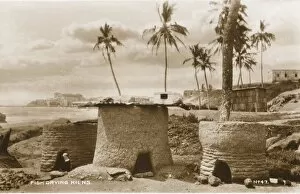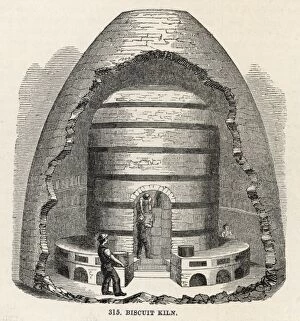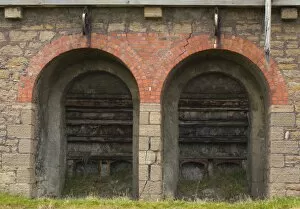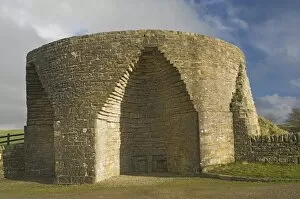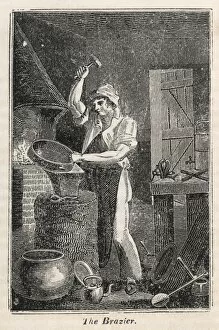Kiln Collection (#8)
In the bustling British factory of the 1800s, glassblowers skillfully crafted delicate masterpieces within the fiery depths of the kiln
For sale as Licensed Images
Choose your image, Select your licence and Download the media
In the bustling British factory of the 1800s, glassblowers skillfully crafted delicate masterpieces within the fiery depths of the kiln. The air was filled with a sense of anticipation as they carefully manipulated molten glass, their expertise evident in every piece they created. Venturing outside, one could catch a breath of fresh air from the potteries nearby, where skilled artisans molded clay into beautiful pottery before firing them in massive kilns. The rhythmic clinking and hissing sounds echoed through the streets as these craftsmen brought life to their creations. Across Britain, glass factories dotted the landscape like jewels, each housing dedicated workers who tirelessly operated kilns day after day. In Porthgain lime workings in West Wales, towering kilns stood proudly against a backdrop of rugged cliffs and crashing waves—a testament to human ingenuity blending seamlessly with nature's beauty. Further inland, oast houses and kilns dominated the horizon—an iconic sight that symbolized centuries-old brewing traditions. These structures played an integral role in producing beer since 1827 when "The Brewer" first showcased their importance to society. Even during World War One, amidst chaos and conflict on land and sea, Royal Navy Rhine Patrol Flotilla motor launches relied on trusty kilns for warmth and sustenance during their arduous journeys along riverside routes. As industrialization swept across nations like a smoky haze engulfing cities' skylines, bottle ovens and kilns became synonymous with progress—a reminder that innovation often came at a cost. Yet amid all this change stood timeless customs such as tea preparation—captured beautifully in China's series of views—which highlighted how even ancient rituals required heat from humble yet essential kilns. Traveling back to 1819 along Grand Junction Canal near Upper Heyford in Northamptonshire revealed artist John Hassell's depiction of picturesque scenes featuring majestic brick-built kilns rising above the tranquil waters, a testament to their enduring presence throughout history.



